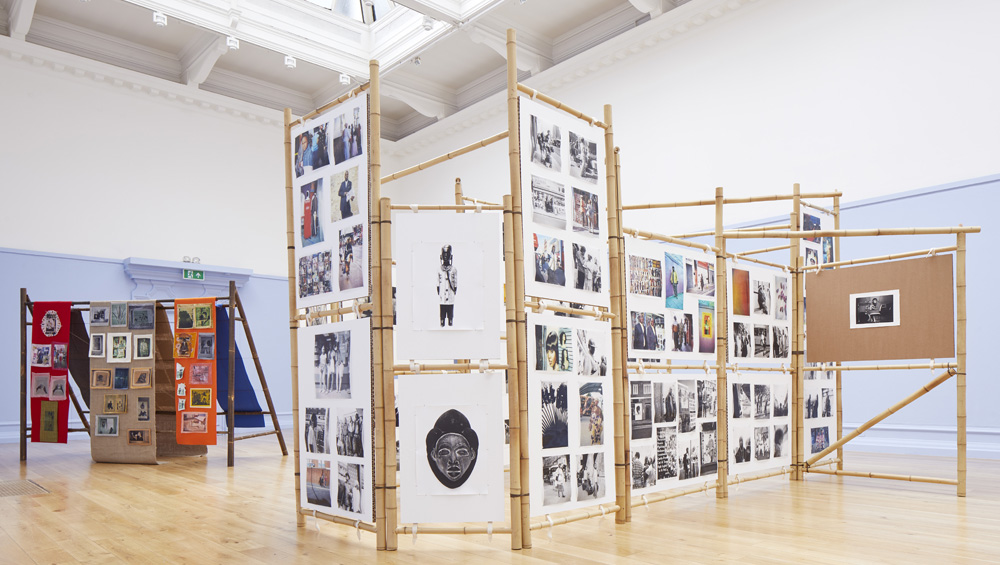
Installation view of Liz Johnson Artur: If you know the beginning, the end is no trouble at the South London Gallery, 2019. Photo: Andy Stagg.
South London Gallery
13 June – 1 September 2019
by VERONICA SIMPSON
“What I do is people,” says the Russian-Ghanaian artist Liz Johnson Artur (b1964, Bulgaria), who has lived in London since 1991. Over nearly three decades, she has photographed the black British community around her in south London: “Those people who are my neighbours. And it’s those people who I don’t see represented anywhere.”
They are certainly represented here. If You Know the Beginning, the End Is No Trouble, at South London Gallery (SLG), feels like a celebration of the richness and diversity of the community around it – the gallery sits on the dividing line between Peckham and Camberwell, home to the UK’s largest Nigerian and Ghanaian communities.
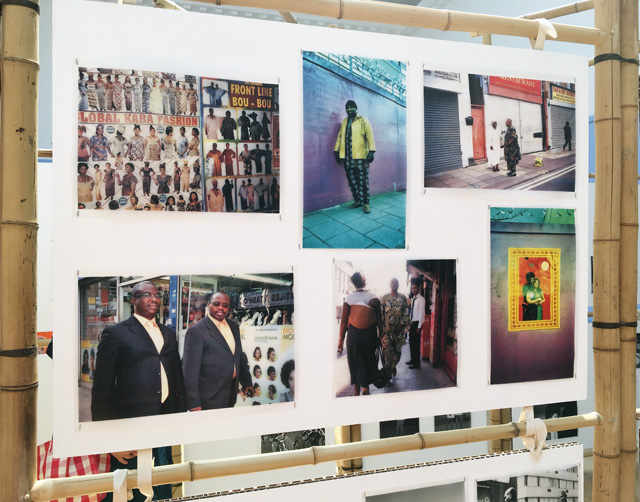
Liz Johnson Artur: Peckham … A Love Letter, 2019 (detail). Installation view at the South London Gallery, 2019. Photo: Veronica Simpson.
Johnson Artur shares with us a feast of imagery from the past three decades, taken across many different moments in the lives of her friends and neighbours, from people relaxing at home on their sofas to dressing up for church in Sunday finery. These images are pinned up in carefully choreographed multitudes across four sculptural bamboo-cane structures of great lightness and grace that dance across the wooden floor of the main SLG gallery; on the day I visit – one of the hottest in June – the room is bathed in sunshine, which pours down from the gallery’s magnificent Victorian skylight, adding to the feeling of civic celebration.
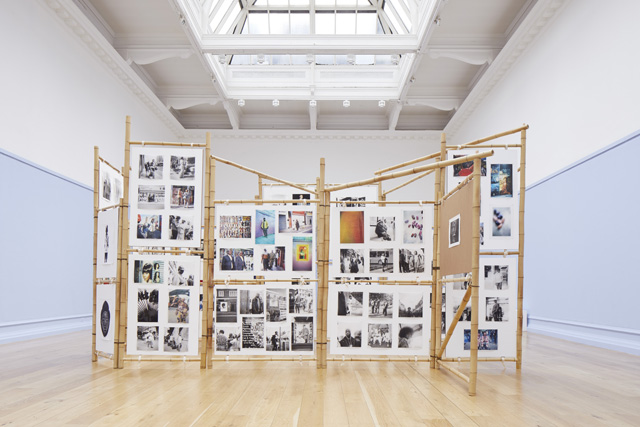
Liz Johnson Artur, Peckham, 2019. Installation view at the South London Gallery, 2019. Photo: Andy Stagg.
In the centre of the room is the main structure, which Johnson Artur has titled Peckham … A Love Letter. Her C-type and silver gelatin prints are mostly informal, capturing ordinary people going about their business, but also showing off their personal style, whether in smart, western-style suits or wrapped in traditional African robes. Occasionally, a beautiful formal portrait pops up, like one in black and white depicting a young girl practising her guitar with great seriousness. The plurality of the black British experience seems to be underlined by the eclectic selection of images, a mix of large and small, colour and monochrome, some printed on cloth or acetate sheets, made into books. A sense of abundant and infinite variety - and creativity - is conjured, dwarfing the more typical newspaper narratives that also crop up here (a stop and search).
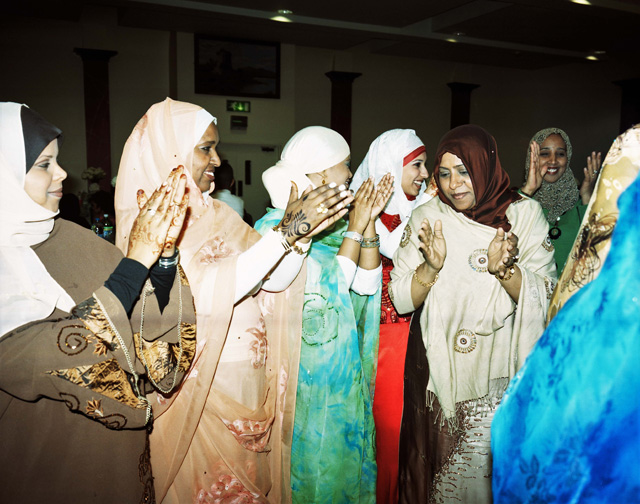
Liz Johnson Artur, Ethiopian wedding, 2009. Courtesy the artist.
Into these scenes of everyday life, Johnson Artur weaves more mysterious, occasionally abstract images. One display is interspersed with close-ups of tropical palm tree leaves reflected in glass. Another slim section frames two black-and-white, archive-style shots of what appear to be African traditional sculptures; one is a mask, but the other, on closer inspection, is clearly supposed to be a doctor, in white lab coat, stethoscope in his ears; Johnson Artur’s practice explores black British identity in all its aspects, also showing the evolving hybridity, attuned to those points where cultures clash and overlap.
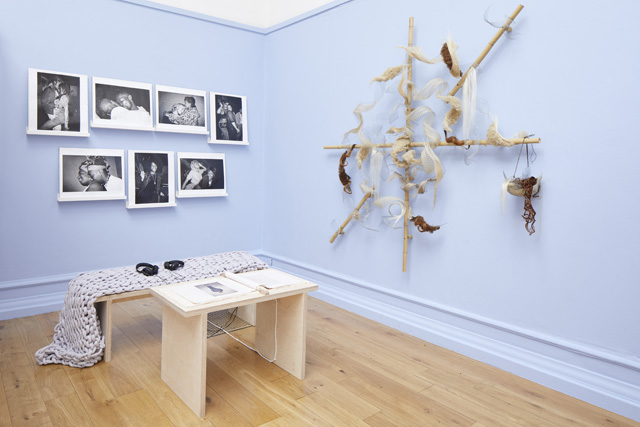
Liz Johnson Artur, Women’s Corner, 2019 (detail). Installation view at the South London Gallery, 2019. Photo: Andy Stagg.
The far end of the room has been screened off to create a “Women’s Corner”, and its images celebrate the rituals around hair, plaiting, weaving, sculpting and ironing, from the salon to the club. On the wall, draped over a collection of bamboo canes, is a symphony of plaits and curls, from blond to brown, all hair sculptures by artist Virginie Pinto Moreira. They perch like exotic birds; flamboyant headpieces waiting to be chosen. Two headphones invite us to sit and listen to oral histories (the interviews conducted by Jade Onojeruo and Zezi Ifore) made welcome by a loose-woven rug draped over a bench.

Liz Johnson Artur: Women’s Corner – Oral Histories, 2019 (detail). Installation view at the South London Gallery, 2019. Photo: Veronica Simpson.
Around the far corner, Johnson Artur has placed images of London’s non-binary black nightlife, sweaty club embraces, good times; blurry, intimate, caught on the hoof. Another, more formal, portrait pops up, this time in colour, of a gorgeous young woman dressed up to the nines, but more noticeable than her elaborate hairstyle or the tribal choker she wears with great panache is a luminous quality she emits – of enjoying being “seen”, in all her splendour. The rapport with the photographer is palpable. The placement of an informal salon snap above her – of a young woman having her hair laboriously teased out into plaits – becomes a wry comment on the work it takes to look this good.
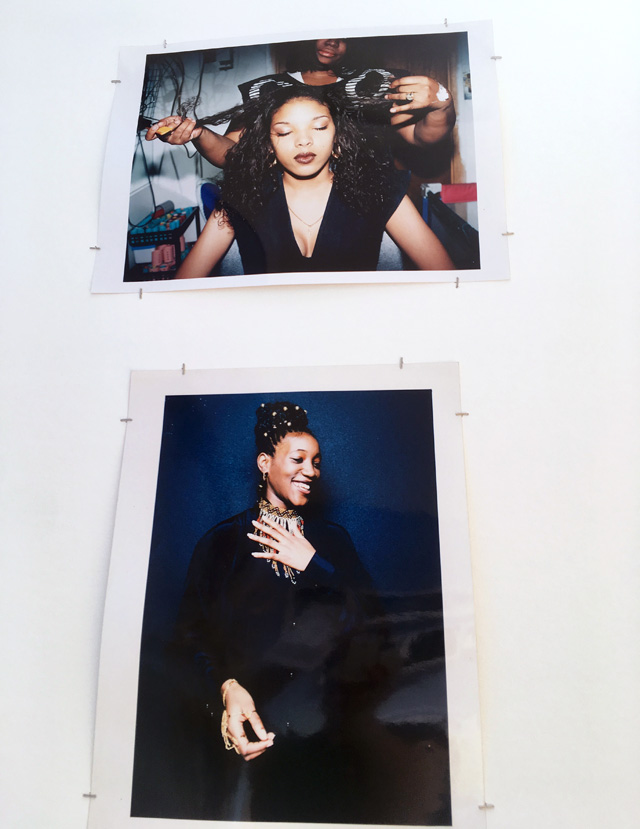
Liz Johnson Artur: If You Know the Beginning, the End Is No Trouble, 2019 (detail). Installation view at the South London Gallery, 2019. Photo: Veronica Simpson.
A circular structure in the opposite corner is called Community, celebrating “home … weddings … churches … and most of all people”. It does exactly that, but also weaves in poetic, abstract shots of flowers, petals and a few eloquent twigs. Johnson Artur shows us her craft, her curiosity; the art of looking embedded in all aspects of her practice and life.
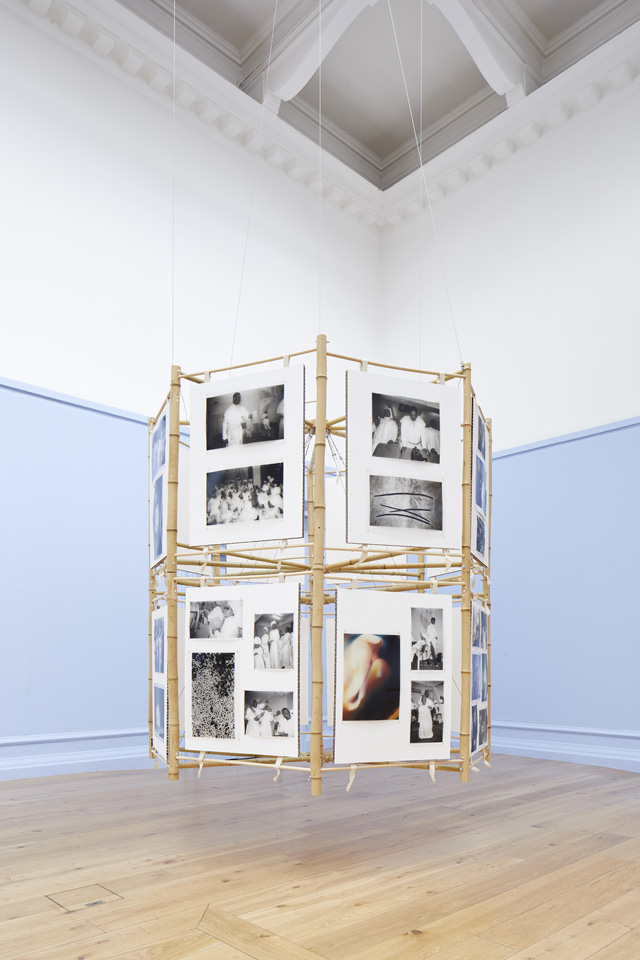
Liz Johnson Artur, Community, 2019. Installation view at the South London Gallery, 2019. Photo: Andy Stagg.
The foremost structure, however, is one she has named Library. This simple linear frame sits at the entrance to the gallery, draped in wide banners of felt, fabric and leather, coloured blue, brown, russet and grey.
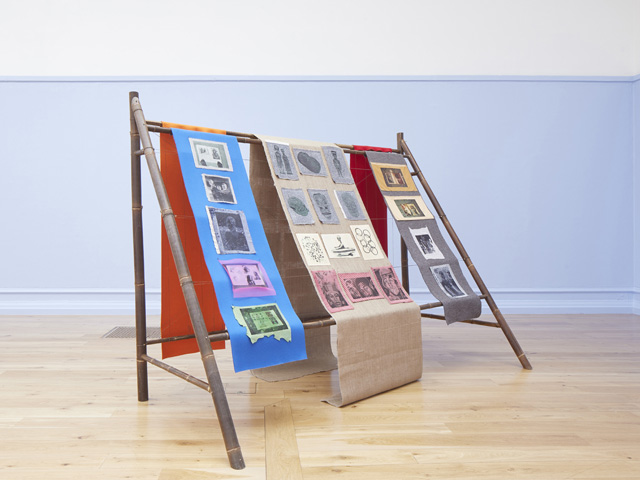
Liz Johnson Artur, Library, 2019. Installation view at the South London Gallery, 2019. Photo: Andy Stagg.
On these, Johnson Artur places collages of reference imagery, taken from the extensive collection of books, vinyl records and magazines she keeps in her studio. Like Theaster Gates, Johnson Artur places great store by the act of archiving black lives, of bearing witness to the rainbow multitudes who fall below the European mainstream radar for reasons of ignorance, oversight, or worse. She says in the accompanying leaflet: “The library represents the heartbeat of the archive … it’s the place … where I try to learn … how to preserve my photographs … for the test of time.”
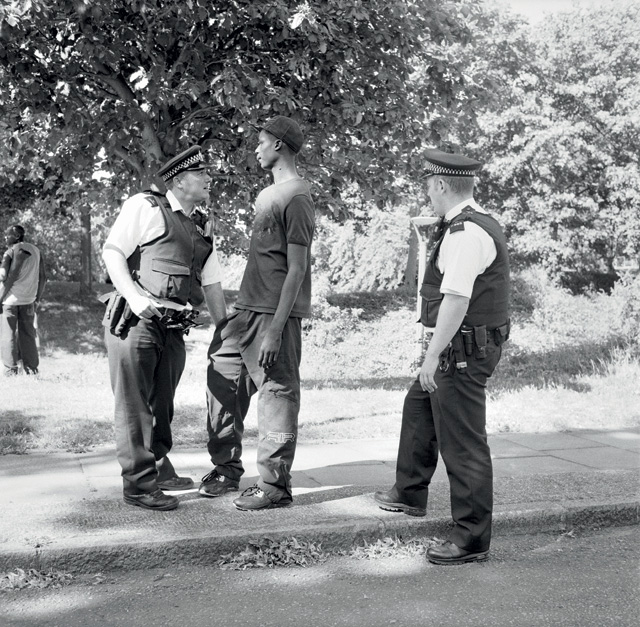
Liz Johnson Artur, Peckham, 2009. Courtesy the artist.
Johnson Artur may be referring to her south London archive, or her ongoing Black Balloon Archive, encompassing all the photos she has taken not just in Europe but in America, Africa and the Caribbean. She named it for a line in a 1970s song by Syl Johnson that describes a black balloon “dancing” in the sky – that image, says Johnson Artur, is how she imagines her own movement as she wends her way through all these communities, bearing witness with her photographs. In an interview for the 2016 show at the Photographers’ Gallery in London (Made You Look: Dandyism and Black Masculinity), she talked of her collaborative approach to photography, wanting to capture the personal style of her participants: “This way I believe photography can show us something very unique and still familiar.” What this show does is more.
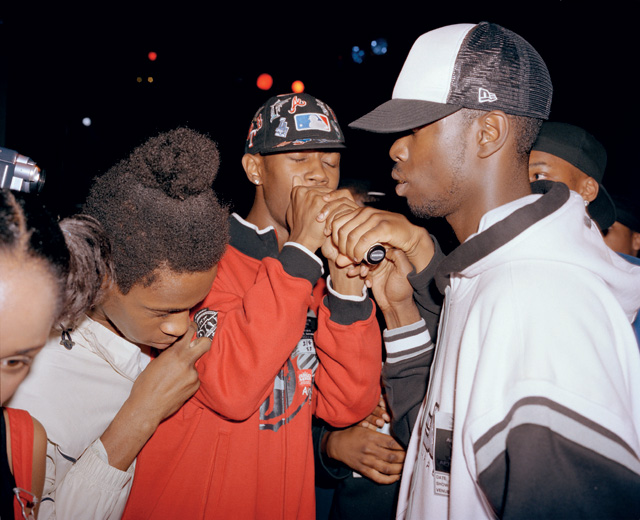
Liz Johnson Artur, Under 18s Rave, East London, 2003. Courtesy the artist.
Born to a Ghanaian father and a Russian mother, Johnson Artur had a disrupted, nomadic childhood, in Bulgaria, then Germany, then New York. The first decade must have been spent feeling decidedly “other”, displaced. What these photos evoke is someone very much at home. During the exhibition, she is sharing this “home” through an events programme that features a range of artists and individuals, from internet fashion sensation Miss Jason to experimental musician Nkisi, but also the wider community. She told i-DVice magazine: “I’ve always seen my work as positive. I’m not pointing fingers. I’m not trying to teach people. I want to show people what’s there. If you care to look, you will see so much.”